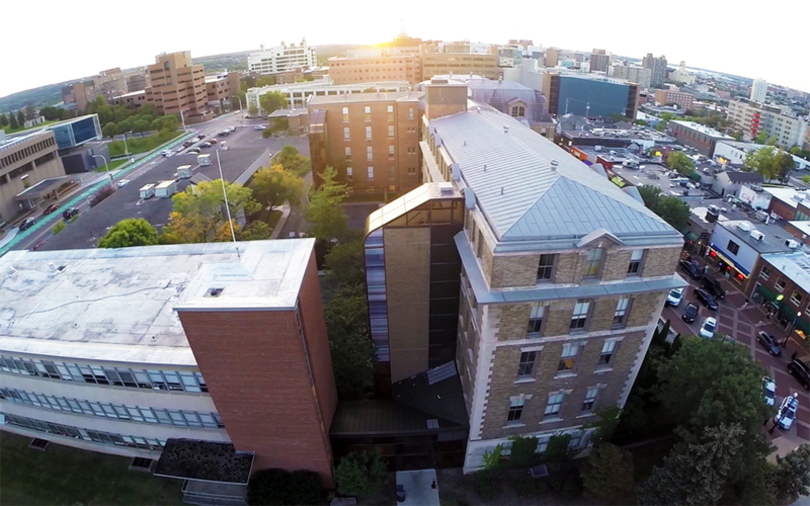Syracuse University among colleges feeling effects of teacher shortage

Chase Guttman | Staff Photographer
The School of Education at Syracuse University is facing decreased enrollment from students who want to become teachers.
The School of Education at Syracuse University and colleges all over New York state are facing decreased enrollment from students who want to become teachers, causing a decrease in public classroom teachers in the state and a looming teacher shortage.
The number of public classroom teachers decreased by 8 percent statewide over the last decade, according to state data from the 2014-15 academic year. This decrease mirrors the issue that is taking place nationwide, said Joanna Masingila, dean of SU’s School of Education.
Both public and private schools see the shortages, she said. The School of Education has seen a decline in enrollment numbers, but not as much as other schools that have to reduce their faculty by half.
“It is important for every society to have a strong educational system,” Masingila said. “K-12 is very fundamental and society needs to recognize the critical need to educate its citizens.”
State data from the 2012-13 academic year shows that 5,029 State University of New York students earned their bachelor’s degree and were recommended to sit for certification exams. In the 2003-04 academic year, 7,190 students did the same thing, according to a March 7 Politico article.
Some school districts are coming to the School of Education to recruit students for their open teacher positions, said Kathleen Hinchman, associate dean for academic affairs in the School of Education. That set of actions is what Hinchman said shows the students that it could be a good thing to go into the teaching market.
“There has been some inappropriate finger-pointing to teachers for things they’re not totally responsible for, like test scores, which probably made some teachers want to retire early,” Hinchman said.
With the revision of the Elementary and Secondary Education Act signed by Congress in 2015, issues such as teacher evaluations, standards and accountability would be left up to state and district rule. Hinchman said she thinks this will loosen up the field, because “we don’t want to discourage good people from becoming teachers.”
Hinchman said she thinks people are especially worried about fields in education that already have shortages, such as science, technology, engineering and mathematics (STEM) programs; second language education; and sometimes literacy.
The School of Education has seen some decline in students who enroll in majors to be teachers. Hinchman said this decline is not more than the national average and “less than quite a few other schools in the state.”
George Theoharis, chair of SU’s Department of Teaching and Leadership in the School of Education, suspects there are two reasons that there will be a teacher shortage in the future. The first is that there has been more conversation about the problems plaguing schools.
“K-12 schools aren’t above criticism, but think of the big picture. The pressure (on teachers) makes teaching a less attractive field,” Theoharis said.
The second reason was that after the recession hit in 2007 and 2008, jobs declined, teachers stopped retiring and there was less hiring. The big pendulum swing of that, he said, is that in the next four to five years, there will be a teacher shortage.
Theoharis said he does a fair amount of recruiting for the School of Education, particularly in increasing the number of recruiting events for graduate students. He said the school has recently pushed to have more faculty and current students involved in the recruiting process.
“We really need to pay attention to how we can support teachers and realize that teachers can’t solve all societal problems in the classroom,” Masingila said. “Blaming teachers is not helpful at all. We have to work with teachers.”




